Related Research Articles

Condensed matter physics is the field of physics that deals with the macroscopic and microscopic physical properties of matter, especially the solid and liquid phases that arise from electromagnetic forces between atoms and electrons. More generally, the subject deals with condensed phases of matter: systems of many constituents with strong interactions among them. More exotic condensed phases include the superconducting phase exhibited by certain materials at extremely low cryogenic temperatures, the ferromagnetic and antiferromagnetic phases of spins on crystal lattices of atoms, the Bose–Einstein condensates found in ultracold atomic systems, and liquid crystals. Condensed matter physicists seek to understand the behavior of these phases by experiments to measure various material properties, and by applying the physical laws of quantum mechanics, electromagnetism, statistical mechanics, and other physics theories to develop mathematical models and predict the properties of extremely large groups of atoms.
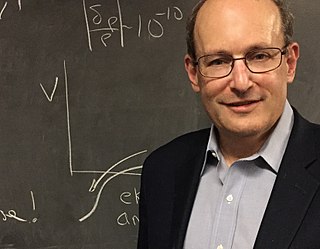
Paul Joseph Steinhardt is an American theoretical physicist whose principal research is in cosmology and condensed matter physics. He is currently the Albert Einstein Professor in Science at Princeton University, where he is on the faculty of both the Departments of Physics and of Astrophysical Sciences.
The λ (lambda) universality class is a group in condensed matter physics. It regroups several systems possessing strong analogies, namely, superfluids, superconductors and smectics. All these systems are expected to belong to the same universality class for the thermodynamic critical properties of the phase transition. While these systems are quite different at the first glance, they all are described by similar formalisms and their typical phase diagrams are identical.
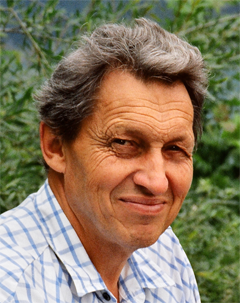
Anatoly Ivanovich Larkin was a Russian theoretical physicist, universally recognised as a leader in theory of condensed matter, and who was also a celebrated teacher of several generations of theorists.
In physics, a phason is a form of collective excitation found in aperiodic crystal structures. Phasons are a type of quasiparticle: an emergent phenomenon of many-particle systems. Similar to phonons, phasons are quasiparticles associated with atomic motion. However, whereas phonons are related to the translation of atoms, phasons are associated with atomic rearrangement. As a result of this rearrangement, or modulation, the waves that describe the position of atoms in the crystal change phase -- hence the term "phason".
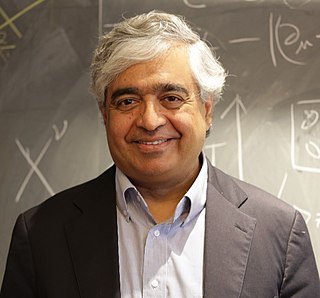
Subir Sachdev is Herchel Smith Professor of Physics at Harvard University specializing in condensed matter. He was elected to the U.S. National Academy of Sciences in 2014, received the Lars Onsager Prize from the American Physical Society and the Dirac Medal from the ICTP in 2018, and was elected Foreign Member of the Royal Society ForMemRS in 2023. He was a co-editor of the Annual Review of Condensed Matter Physics 2017–2019, and is Editor-in-Chief of Reports on Progress in Physics 2022-.

David R. Nelson is an American physicist, and Arthur K. Solomon Professor of Biophysics, at Harvard University.
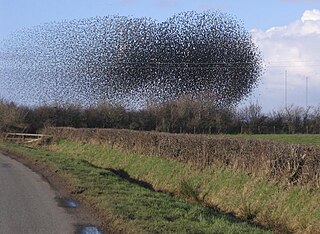
Active matter is matter composed of large numbers of active "agents", each of which consumes energy in order to move or to exert mechanical forces. Such systems are intrinsically out of thermal equilibrium. Unlike thermal systems relaxing towards equilibrium and systems with boundary conditions imposing steady currents, active matter systems break time reversal symmetry because energy is being continually dissipated by the individual constituents. Most examples of active matter are biological in origin and span all the scales of the living, from bacteria and self-organising bio-polymers such as microtubules and actin, to schools of fish and flocks of birds. However, a great deal of current experimental work is devoted to synthetic systems such as artificial self-propelled particles. Active matter is a relatively new material classification in soft matter: the most extensively studied model, the Vicsek model, dates from 1995.

Self-propelled particles (SPP), also referred to as self-driven particles, are terms used by physicists to describe autonomous agents, which convert energy from the environment into directed or persistent motion. Natural systems which have inspired the study and design of these particles include walking, swimming or flying animals. Other biological systems include bacteria, cells, algae and other micro-organisms. Generally, self-propelled particles often refer to artificial systems such as robots or specifically designed particles such as swimming Janus colloids, bimetallic nanorods, nanomotors and walking grains. In the case of directed propulsion, which is driven by a chemical gradient, this is referred to as chemotaxis, observed in biological systems, e.g. bacteria quorum sensing and ant pheromone detection, and in synthetic systems, e.g. enzyme molecule chemotaxis and enzyme powered hard and soft particles.
The Vicsek model is a mathematical model used to describe active matter. One motivation of the study of active matter by physicists is the rich phenomenology associated to this field. Collective motion and swarming are among the most studied phenomena. Within the huge number of models that have been developed to catch such behavior from a microscopic description, the most famous is the model introduced by Tamás Vicsek et al. in 1995.
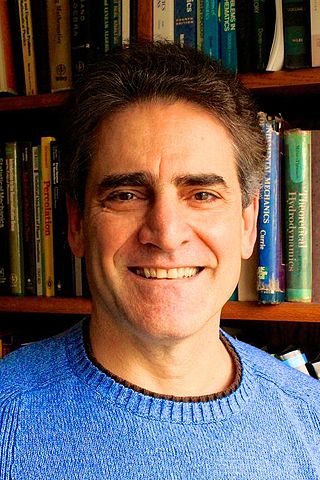
Salvatore Torquato is an American theoretical scientist born in Falerna, Italy. His research work has impacted a variety of fields, including physics, chemistry, applied and pure mathematics, materials science, engineering, and biological physics. He is the Lewis Bernard Professor of Natural Sciences in the department of chemistry and Princeton Institute for the Science and Technology of Materials at Princeton University. He has been a senior faculty fellow in the Princeton Center for Theoretical Science, an enterprise dedicated to exploring frontiers across the theoretical natural sciences. He is also an associated faculty member in three departments or programs at Princeton University: physics, applied and computational mathematics, and mechanical and aerospace engineering. On multiple occasions, he was a member of the schools of mathematics and natural sciences at the Institute for Advanced Study, Princeton, New Jersey.
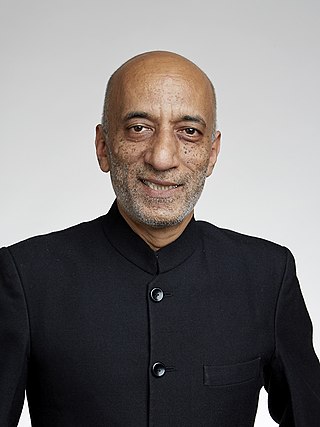
Sriram Rajagopal Ramaswamy is an Indian physicist. He is a professor at the Indian Institute of Science, Bangalore, and previously the director of the Tata Institute of Fundamental Research (TIFR) Centre for Interdisciplinary Sciences in Hyderabad.

Nelamangala Vedavyasachar Madhusudana is an Indian physicist and an emeritus scientist at Raman Research Institute. Known for his research on liquid crystals, Madhusudhana is an elected fellow of Indian Academy of Sciences and Indian National Science Academy. The Council of Scientific and Industrial Research, the apex agency of the Government of India for scientific research, awarded him the Shanti Swarup Bhatnagar Prize for Science and Technology, one of the highest Indian science awards, for his contributions to physical sciences in 1989.
An active fluid is a densely packed soft material whose constituent elements can self-propel. Examples include dense suspensions of bacteria, microtubule networks or artificial swimmers. These materials come under the broad category of active matter and differ significantly in properties when compared to passive fluids, which can be described using Navier-Stokes equation. Even though systems describable as active fluids have been observed and investigated in different contexts for a long time, scientific interest in properties directly related to the activity has emerged only in the past two decades. These materials have been shown to exhibit a variety of different phases ranging from well ordered patterns to chaotic states. Recent experimental investigations have suggested that the various dynamical phases exhibited by active fluids may have important technological applications.

Thomas Maurice Rice, known professionally as Maurice Rice, is an Irish theoretical physicist specializing in condensed matter physics.

Serafim Kalliadasis is an applied mathematician and chemical engineer working at Imperial College London since 2004.
Dietrich Belitz is an American theoretical physicist on the faculty of the University of Oregon. He studies statistical mechanics and condensed matter physics.
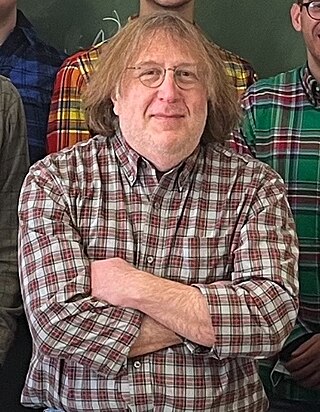
Randall David Kamien is a theoretical condensed matter physicist specializing in the physics of liquid crystals and is the Vicki and William Abrams Professor in the Natural Sciences at the University of Pennsylvania.
Dov I. Levine is an American-Israeli physicist, known for his research on quasicrystals, soft condensed matter physics, and statistical mechanics out of equilibrium.
Leo Radzihovsky is a Russian American condensed matter physicist and academic serving as a professor of Distinction in Physics at the University of Colorado Boulder.
References
- ↑ Toner, John (2005). "Birth and career dates". American Men and Women in Science. Gale Thomson.
- ↑ "L a u d a t i o: Prof. Dr. John Toner" (PDF). Retrieved 2024-03-20.
- ↑ "John Toner". The Mathematics Genealogy Project. Retrieved 2024-03-20.
- ↑ "College of Arts and Sciences". John Toner. Retrieved 2024-03-20.
- 1 2 3 "John Toner". University of Oregon WordPress Hosting – Educational blogs from our community. Retrieved 2024-03-19.
- 1 2 "A short equation delivers a big award for a UO physicist". Around the O. 2019-11-12. Retrieved 2024-03-19.
- ↑ Ngo, S.; Romanczuk, P.; Chen, L.; Toner, J.; Chaté, H. (2016). "Emergent smectic order in simple active particle models". New Journal of Physics. 18 (071001).
- ↑ Sarkar, Niladri; Basu, Abhik; Toner, John (2021-12-23). "Hydrodynamic theory of flocking at a solid-liquid interface: Long-range order and giant number fluctuations". Physical Review E. 104 (6). arXiv: 2102.02534 . doi:10.1103/PhysRevE.104.064611. ISSN 2470-0045.
- ↑ "Physics of cilia explain sperm's successful swimming". Around the O. 2022-01-18. Retrieved 2024-03-19.
- ↑ Logan, Jack; Michelson, Aaron; Paattammattel, Ajith; Yen, Hanfei; Gang, Oleg; Tkachenko, Alexei (2023). "Symmetry-specific characterization of bond orientation order in DNA-assembled nanoparticle lattices". The Journal of Chemical Physics. 159: 154905.
- ↑ Widom, Michael; Mihalkovič, Marek (2023-10-16). "Quasicrystal Structure Prediction: A Review". Israel Journal of Chemistry. arXiv: 2308.09192 . doi:10.1002/ijch.202300122. ISSN 0021-2148.
- ↑ Toner, J. (1989). "Elastic anisotropies and long ranged interactions in solid membranes". Phys. Rev. Lett. 62: 905.
- ↑ Le Doussal, Pierre (2010-08-30). "NOVEL PHASES OF VORTICES IN SUPERCONDUCTORS". International Journal of Modern Physics B. 24 (20n21): 3855–3914. doi:10.1142/S0217979210056384. ISSN 0217-9792.
- ↑ "APS Fellow Archive". American Physical Society. Retrieved 19 March 2024.
- ↑ "Simons Fellows in Theoretical Physics". Simons Foundation. 2017-07-18. Retrieved 2024-03-20.
- ↑ "Martin Gutzwiller Fellow". Welcome to the Max Planck Institute for the Physics of Complex Systems. 2023-12-11. Retrieved 2024-03-12.